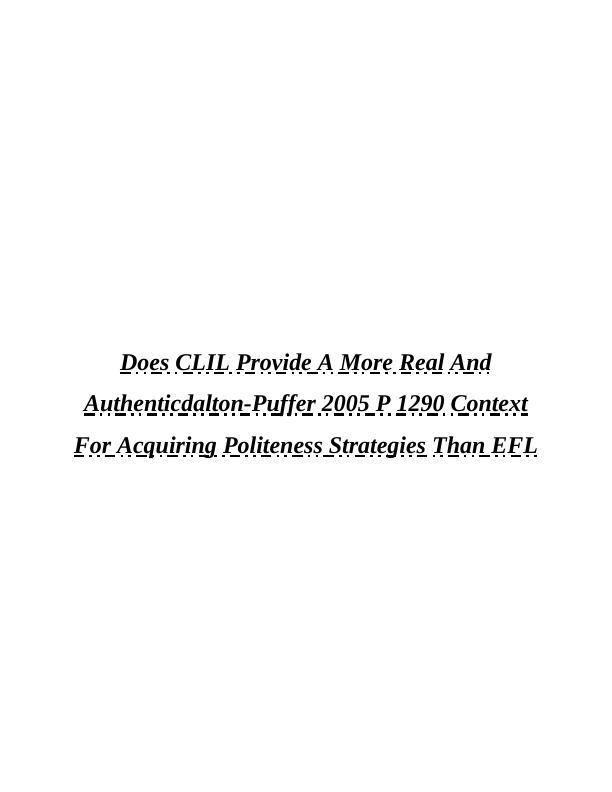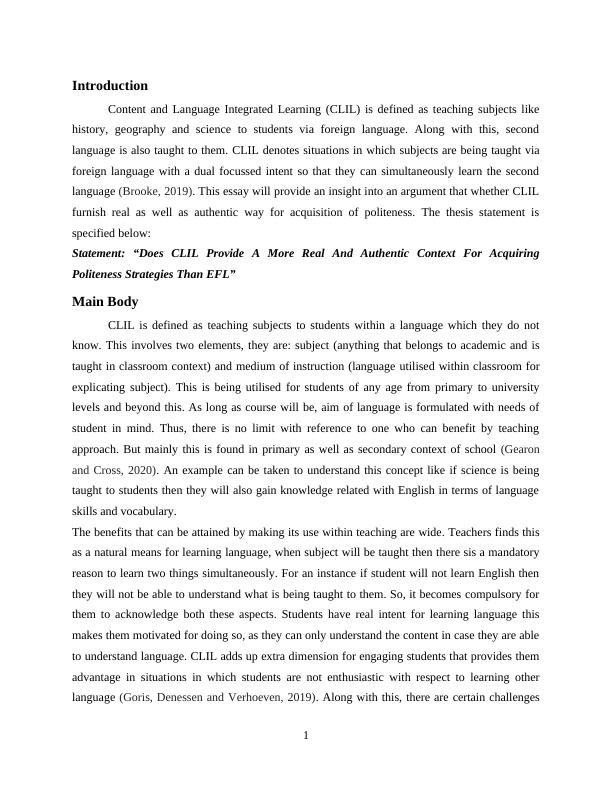Does CLIL Provide A More Real And Authentic Context For Acquiring Politeness Strategies Than EFL
Added on 2023-01-10
6 Pages1396 Words60 Views
End of preview
Want to access all the pages? Upload your documents or become a member.
Teaching Materials and the Roles of EFL/ESL Teachers
|9
|2006
|106
Vietnamese EFL Learners
|16
|3747
|482
Suggestopedia (as teaching method for learning EFL)
|6
|1111
|379
Materials and Teaching activities for foreign language PDF
|3
|360
|84
Assignment on Role of Authenticity of Materials and Activities
|17
|4662
|95
English Language Teaching: Comparison and Contrast between Methods and Post Methods
|8
|1973
|262



